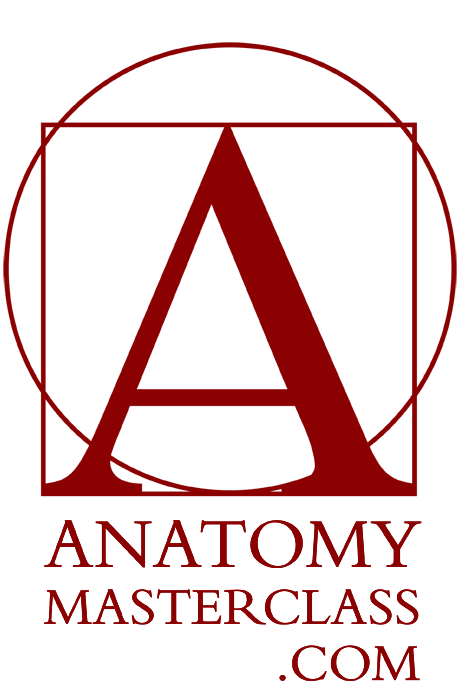Muscles of the Body
Muscles of the Body
Anatomy Lesson 4 – Part 2
In this video lesson, you will discover the major muscles of the body.
Major Muscles of the Body

The muscles of the chest and shoulders are as follows.
The deltoid muscle is triangular in shape. It surrounds the shoulder from the front, side, and back. At the top, it is attached to the outer-half of the collarbone; at the side and back, it is attached to the shoulder-blade. It connects to the upper-arm approximately in the middle of the upper arm-bone.
From the rear, the shoulders, neck, and part of the back are covered by muscle, which is called the trapezius. It has an irregular, four-sided shape that runs from the lower edge of the skull to the shoulders and spine.
When you draw the outline of the trapezius, it is best to mark it with a continuous line that goes along the shoulders. In this way you will ensure the necessary symmetry.
The pectoralis major is the chest muscle that assists in movement of the upper-arms. These two chest muscles cover the area from the collarbones to the 6th and 7th rib pairs.
The front and sides of the abdomen are covered by the external oblique muscle. This muscle group is thicker on the sides, and in the middle it covers the “six-pack” very thinly. This muscle is responsible for many motions. Together with the six-pack, it bends the torso at the waist, flexes the body sideways, and also rotates the torso. The six-pack muscle is called rectus abdominis. It consists of two muscle bands which are divided in the middle by a white line, called the linea alba.
The widest muscle of the back is called the latissimus dorsi. It has a triangular shape and covers the most of the back. This “V”-shaped muscle assists in various movements of the upper-arms.
One of the muscles that shape the appearance of the upper-leg is the Sartorius or tailor’s muscle. It is the longest muscle in the human body. This muscle resembles a strap, and allows one to sit in a cross-legged position. It is also called the tailor’s muscle.
On the outer edge, the upper leg is outlined by the tensor fascia latae.
Between the top edge the upper-leg bone and the iliac crest of the pelvis is a muscle called the gluteus medius, which is responsible for adducting the leg sideways.
In front, the thigh is defined by a massive muscle group called the quadriceps group. In Latin, its name stands for “four heads”. The main function of this muscle group is to extend or straighten the lower leg from the bent knee position.
The inner portion of the thigh contains the adductor group of muscles. This group consists of 5 muscles which participate in various movements of the thigh, such as adducting, extending, and flexing.
The muscles of the lower leg are grouped into three compartments: anterior (or frontal), posterior (or rear), and lateral (or outer side).
At the rear is the calf muscle, whose Latin name is gastrocnemius.
The shin muscle is known as the tibialis anterior.
Nearby is the extensor digitorum longus.
Two prominent muscles of the upper arm are:
- The Biceps brachii
- And the Triceps brachii
The muscles of the lower-arm are divided into two groups:
- The extensor group, which is located on the posterior compartment of the arm. This group extends the fingers as well as the hand at the wrist joint
- The flexor group, which is located on the anterior compartment of the arm and is responsible for flexion of the wrist and fingers
[ The full lesson is avaibale to Anatomy Master Class members ]
To learn more about muscles of the body, enrol in the Anatomy Master Class
Simple Pricing, No Surprises
One-time payment - Only $97 USD
ENROLL NOW



